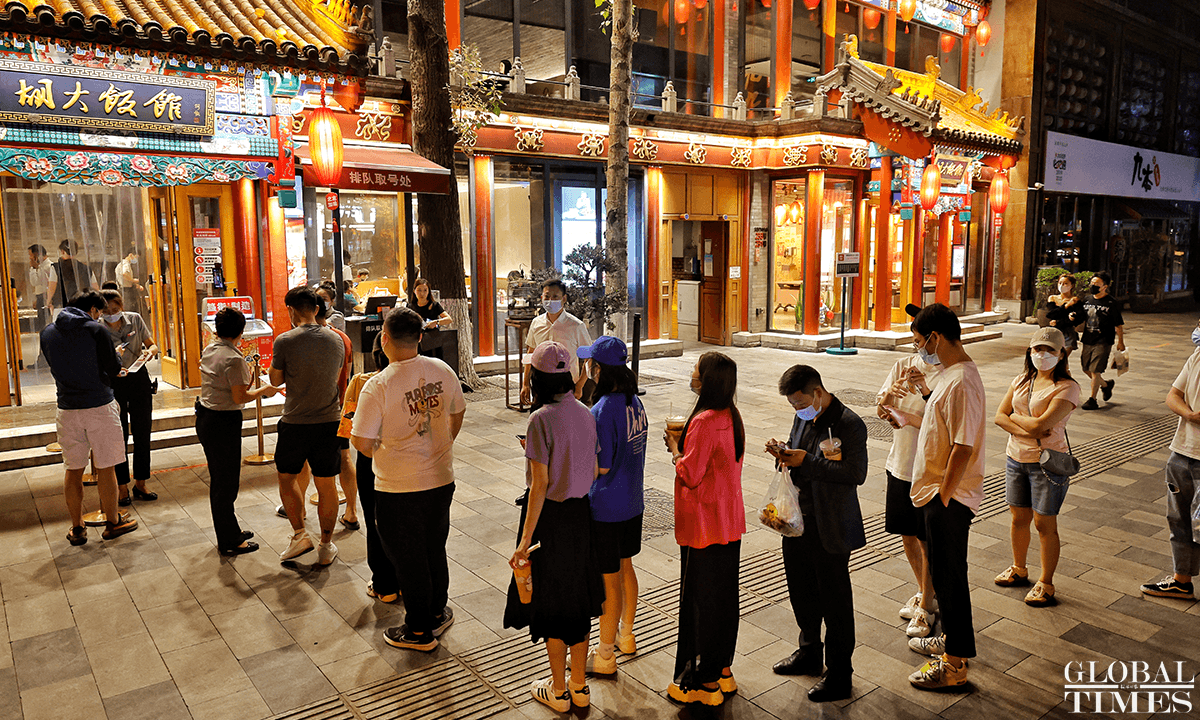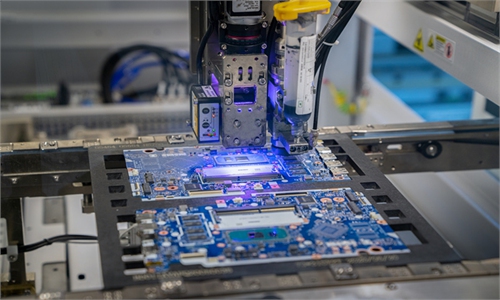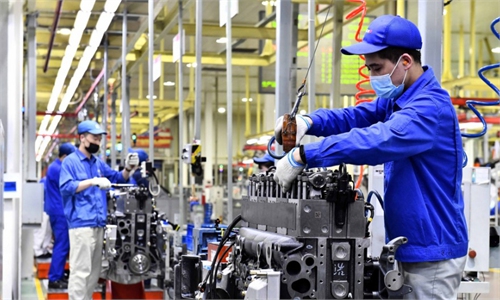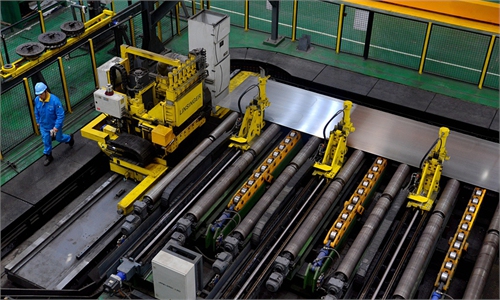China’s manufacturing, services PMIs at highest levels in over 11 months, private survey shows

People queue in line in front of a restaurant in Beijing to scan health code and test body temperature. As dine-in service resumed on June 6 in most parts of Beijing, restaurant owners and food vendors across the capital busily prepared for the end of the ban on dine-in service, which began on May 1. Photo: Li Hao/GT
China's manufacturing and services activities have experienced a rapid rebound in June, with an index for services activities hitting an 11-month high, as the overall COVID-19 epidemic situation has improved and strict epidemic prevention and control measures have been largely relaxed, according to a private survey on Tuesday.
The Caixin services purchasing managers' index (PMI) rose to 54.5 in June, the highest reading over the past 11 months, bringing an end to three months of contraction. The June reading was up 13 points from May.
Caixin manufacturing PMI also recorded a 13-month high in June at 51.7, according to Caixin's survey, which mainly tracks smaller private businesses.
A reading above 50 indicates expansion, while a reading below 50 reflects contraction.
Both indexes indicate a quick recovery of economic activities in the country. The Caixin China composite PMI, a weighted average of manufacturing and service PMI, rose to 55.3 in June, the highest since January 2021, reflecting the resumption of growth in production and business activities.
Analysts said that the PMI data for June shows that China's economy has entered the first stage of post-epidemic recovery, namely the V-shaped rebound of service consumption and industrial production.
This rebound is particularly evident in the tourism industry, as many localities have eased inter-provincial mobility since June, coupled with the arrival of summer travel peak.
Both supply and demand for services picked up in June, the Caixin survey showed. The services business activity index and new orders index returned to expansion territory in June, with supply improving faster than demand.
Companies surveyed said that with the relaxation of strict anti-epidemic measures, business activities had resumed, while the number of customers and levels of spending had risen, supporting sales recovery.
Although business activities in the service sector rebounded strongly in June, the business expectations index was unchanged from May, and some companies are still worried that the epidemic will continue to affect business and customer demand in the future.
The index of new export orders in the service sector, for example, remained in contraction territory for the sixth consecutive month, which companies attributed to COVID-19 and travel restrictions.
Wang Zhe, a senior economist at Caixin Insight Group, said production and operation order of enterprises have gradually returned to normal, and the service sector, which had been more affected by the epidemic, has been recovering more strongly.
"The resumption of work and production as well as the resumption of transportation and logistics will be reflected first on the supply side. It will take time for demand to recover. Manufacturing enterprises still face high-cost pressure and profitability challenges," said Wang.
Wang noted that the slower recovery in demand should be attributed to a weak job market, which has led to deterioration in incomes and expectations, while suggesting that assistance and rescue policies should focus more on affected employees, flexible workers and low-income groups, said Wang.
Global Times



